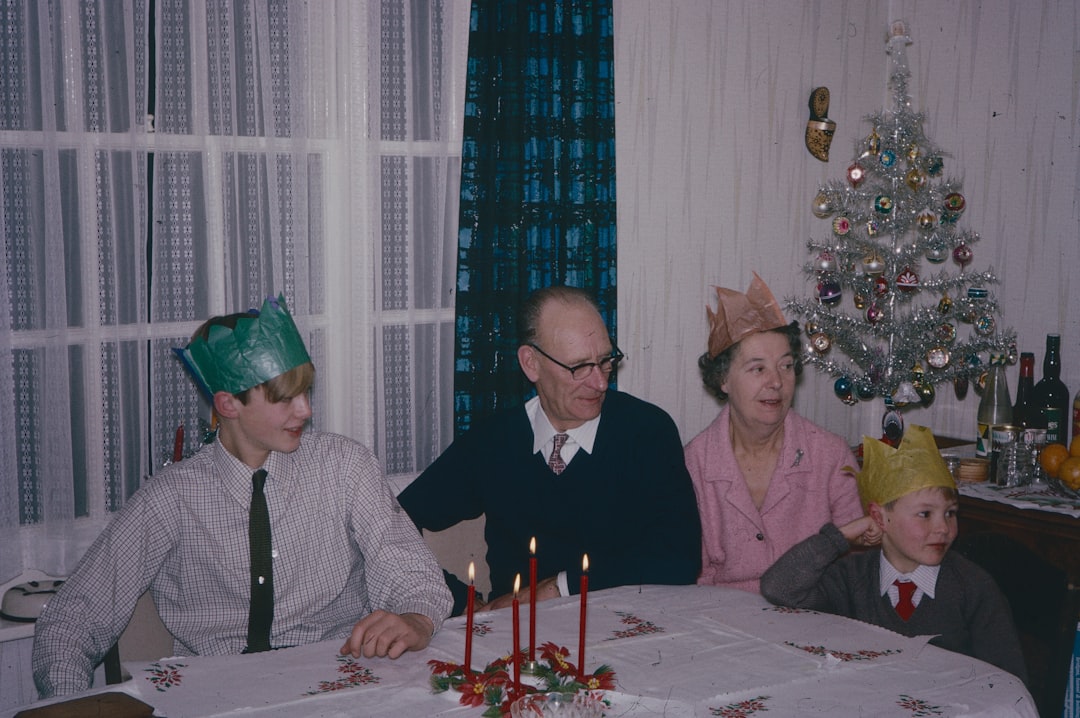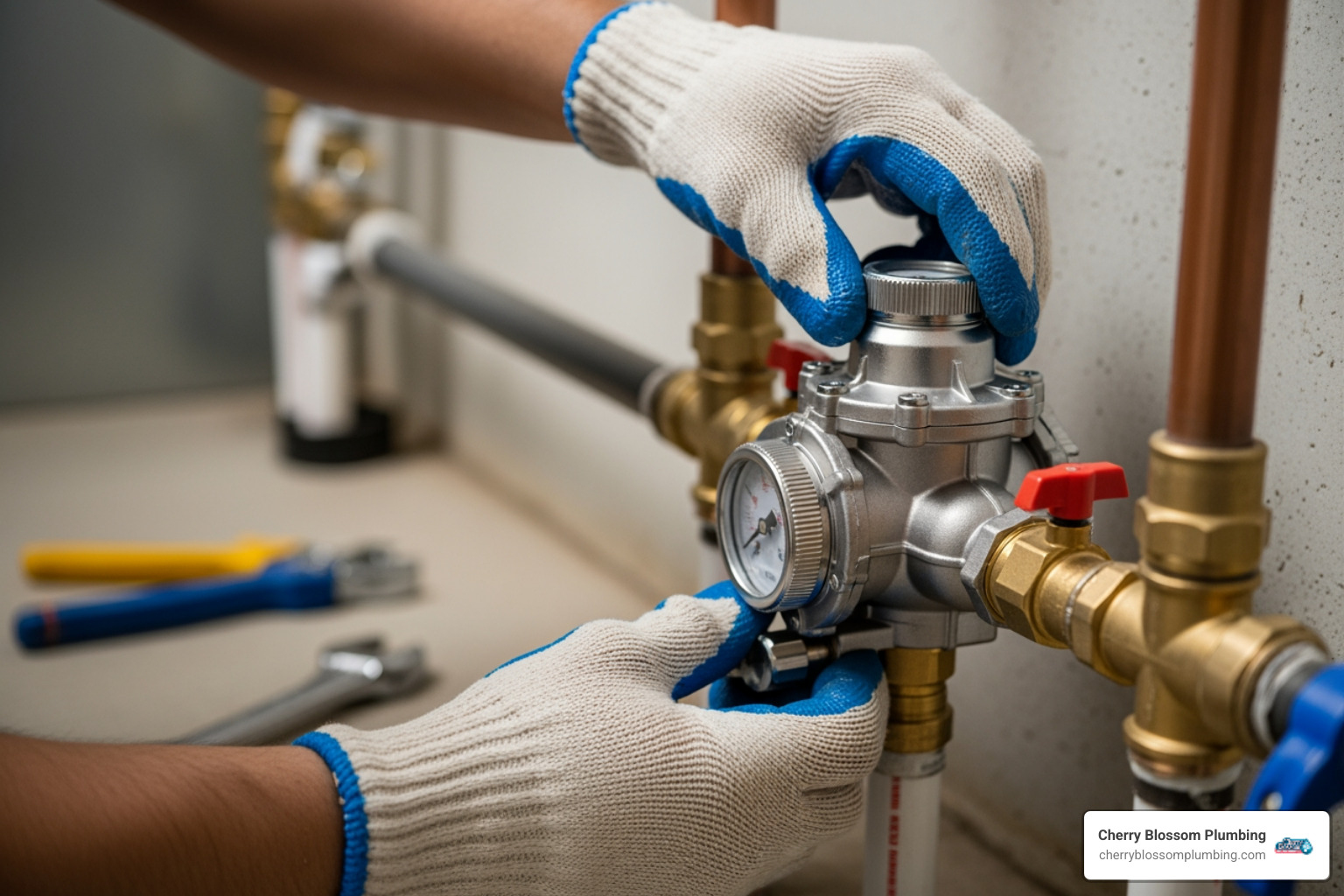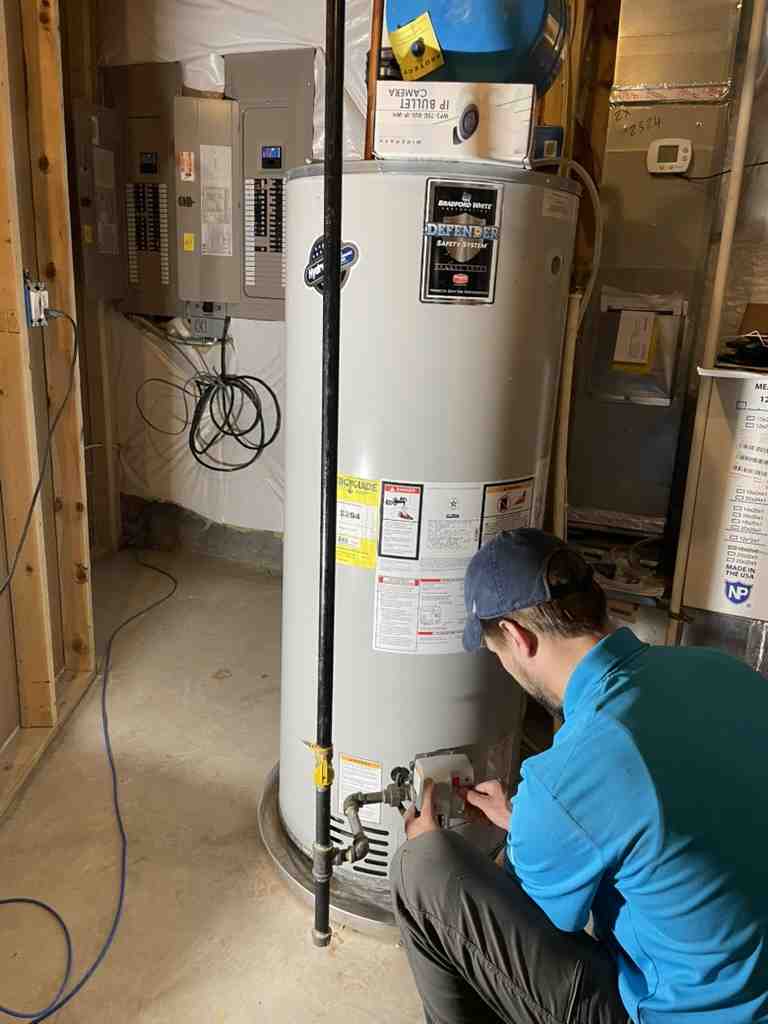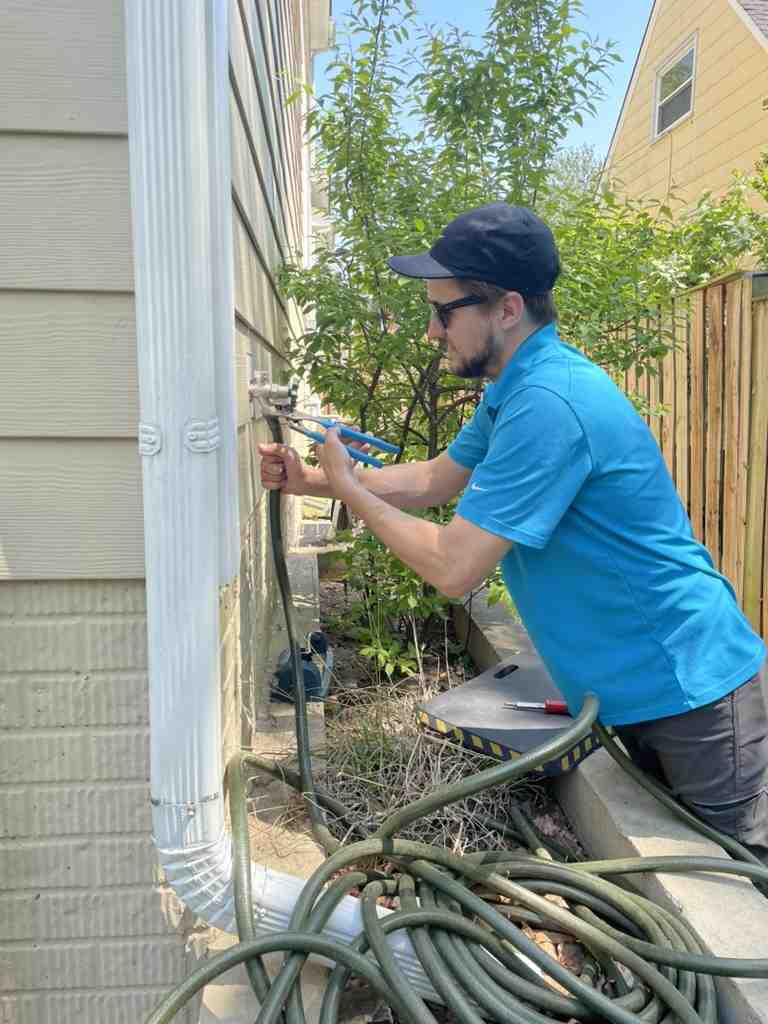
Why Low Water Pressure Matters in Your Home
Low water pressure repair starts with understanding the cause. Here's a quick guide to get your water flowing again:
- Test your pressure - Attach a gauge to an outdoor faucet (normal is 40-80 PSI).
- Check for simple fixes - Clean aerators and ensure the main valve is fully open.
- Look for leaks - Check visible pipes and monitor your water meter.
- Adjust the PRV - If you have a pressure-reducing valve, it may need adjustment.
- Call a pro - For persistent issues, corroded pipes, or booster pump installation.
A weak shower, a slow-filling washing machine, and tedious dish rinsing are all frustrating signs of low water pressure. Whether it's a single sluggish faucet or weak flow throughout your entire Arlington or Falls Church home, understanding the root cause is the first step to restoring strong, consistent water flow.
If you're experiencing other plumbing issues, explore our full range of plumbing services or schedule an appointment with our licensed team.
I'm Amanda Casteel, and I use systematic troubleshooting to help Northern Virginia homeowners solve plumbing challenges like low water pressure repair. This guide will help you identify if your issue is a simple fix, like a clogged aerator, or something that needs professional attention, like corroded pipes or a failing pressure regulator.

Understanding and Diagnosing Low Water Pressure
The first step in low water pressure repair is diagnosis. Is every faucet affected, or just one? Is it only hot water? These clues point to the real culprit.
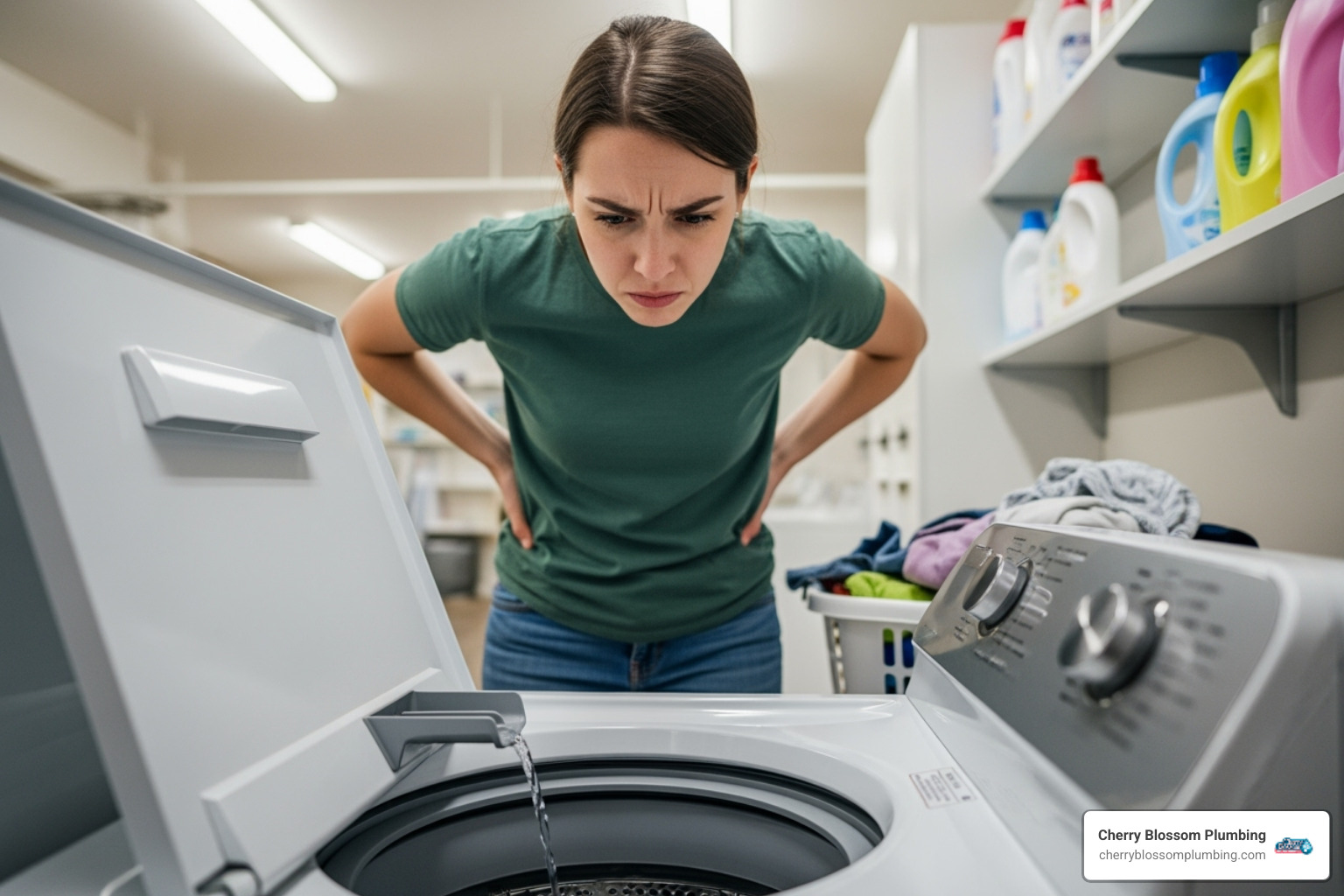
Signs You Have a Water Pressure Problem
You'll know you have a water pressure problem when you see these signs:
- Weak shower stream: Instead of an invigorating spray, you get a disappointing mist.
- Sputtering faucets: Water comes out in fits and starts, often mixed with air.
- Appliances take forever to fill: Your washing machine or dishwasher runs longer than usual.
- Flow drops with multiple fixtures: Turning on the dishwasher makes your shower drop to a trickle.
- Unexplained spikes in your water bill: A hidden leak can reduce pressure while wasting water and money.
If these situations sound familiar, it's time to investigate.
How to Test Your Home's Water Pressure
Testing your water pressure is simple and gives you concrete numbers. You'll need an inexpensive pressure gauge from a home improvement store.

The ideal pressure range is 40-80 PSI (pounds per square inch). Our team at Cherry Blossom Plumbing recommends around 50 PSI for great performance without stressing your pipes. Pressure below 40 PSI causes frustrating symptoms, while pressure above 80 PSI can damage your plumbing over time.
Here's how to test:
- Find an outdoor faucet near your main water line.
- Turn off all water-using fixtures and appliances in your house.
- Screw the pressure gauge firmly onto the faucet.
- Turn the faucet on fully and wait for the needle to settle.
- Read the PSI. If it's below 40 PSI, you've confirmed low pressure. If it's above 80 PSI, your pressure is too high.
Also, ask your neighbors if they're having similar issues. If so, the problem might be with the municipal water supply.
Common Culprits Behind Weak Water Flow
Once you've confirmed low pressure, the next step is finding the cause. The source could be a simple clogged aerator, a corroded pipe, or even a municipal issue.
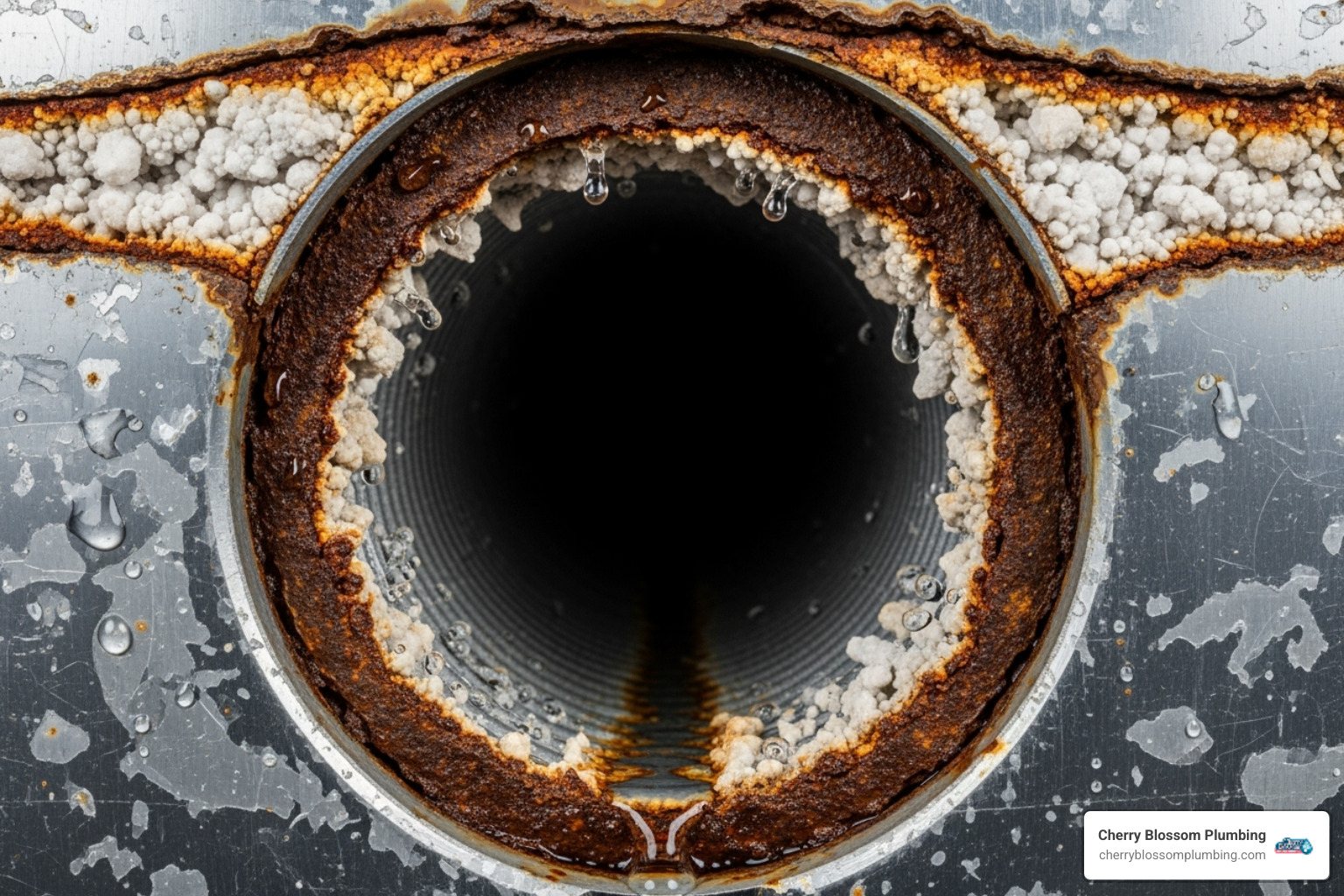
Issues Inside Your Home
Most low water pressure repair situations start inside your home. Here are the most common culprits:
- Mineral buildup: Hard water in Northern Virginia causes calcium and magnesium deposits to accumulate inside pipes, narrowing them and restricting flow.
- Clogged aerators and showerheads: These small screens are magnets for mineral deposits and are a common cause of low pressure at a single fixture.
- Failing Pressure-Reducing Valve (PRV): This valve protects plumbing from high municipal pressure but can fail after 10-20 years, getting stuck and reducing flow to the whole house.
- Hidden pipe leaks: Even a small leak can cause a significant pressure drop throughout your home and lead to serious water damage.
- Water heater issues: If only your hot water has low pressure, sediment buildup in the water heater tank is a likely cause, as it can block the outlet pipe.
- Old galvanized pipes: Common in homes built before the mid-1970s, these steel pipes corrode from the inside out, creating rust buildups that severely restrict water flow.
Problems Originating Outside Your Home
Sometimes the problem is outside your property line.
- Main shutoff valve: This valve controls all water entering your home. If it was not fully reopened after a repair, it will reduce flow to the entire house.
- Water meter valve: The valve at your property line could be partially closed. Contact your local water provider to verify it's fully open.
- Municipal water main break: A break in the city's main line will cause a sudden pressure drop for multiple homes in your neighborhood.
- High neighborhood demand: During peak usage times, you might notice temporary pressure drops as the municipal system struggles to keep up.
- Service line issues: The underground pipe connecting your home to the main can develop leaks or corrosion, reducing pressure before it even reaches your house.
Your Guide to Low Water Pressure Repair
Now let's talk solutions. Many low water pressure repair issues are simple DIY fixes, but some require professional help from our team.
Simple DIY Low Water Pressure Repair Fixes You Can Try Today
Start with these simple checks, which often resolve common pressure problems.
- Clean faucet aerators: Unscrew the tip of the faucet, rinse the screen, and soak it in white vinegar to remove stubborn mineral buildup.
- Clean your showerhead: Unscrew the showerhead and clean the nozzles with a small brush. For heavy buildup, soak it in a plastic bag filled with white vinegar overnight.
- Check your main shutoff valve: Find your home's main water valve (usually in the basement or a utility closet) and ensure it is fully open. A ball valve handle should be parallel to the pipe; a gate valve should be turned counter-clockwise as far as it will go.
- Check for leaks with your water meter: Turn off all water in your home, note the meter reading, and check it again in a few hours. If the numbers have changed, you have a leak.
- Adjust your Pressure-Reducing Valve (PRV): Most PRVs have an adjustment screw. You can try turning it clockwise in small increments to increase pressure, but use a gauge and be careful not to exceed 80 PSI. If the PRV is over 10 years old, it may need replacement.
When to Call a Professional for Low Water Pressure Repair
While DIY fixes are great, some situations require professional expertise from Cherry Blossom Plumbing.
- Persistent low pressure: If you've tried the DIY steps and pressure is still weak everywhere, a professional can diagnose deeper systemic issues.
- Suspected main line leaks: Locating and repairing underground or hidden leaks requires specialized equipment.
- Faulty PRV replacement: Incorrect installation can cause more damage. We ensure your new valve is properly sized and installed.
- Corroded pipes: Replacing old galvanized pipes is a major project that requires skilled execution to minimize disruption.
- Water heater issues: If flushing the tank doesn't fix low hot water pressure, the problem may be internal and require an expert.
- Installing a water pressure booster pump: This is the solution for a consistently low municipal supply, but it requires professional sizing and integration to work correctly and safely.
- Poorly sized piping: In some homes, original pipes are too small to supply all fixtures. This requires professional assessment and potentially repiping.
Preventing Future Problems and Upgrading Your System
After fixing your water pressure, proactive maintenance can prevent future issues. A few regular habits will help you maintain strong, consistent water flow and avoid another low water pressure repair.
Proactive Maintenance for Healthy Water Pressure
Think of your plumbing like a car—it runs best with regular care.
- Clean aerators and showerheads every few months, especially in Arlington and Falls Church where we have hard water. A quick soak in vinegar can prevent buildup.
- Flush your water heater annually to remove sediment. This maintains good hot water pressure and helps the unit run more efficiently and last longer.
- Regularly check for small leaks under sinks and around fixtures. Catching a small drip early can prevent a major pressure problem.
- Schedule an annual professional plumbing inspection. Our 16-point check can spot potential issues like a failing PRV or early signs of corrosion before they become emergencies.
- Insulate exposed pipes before winter to prevent freezing, which can block or burst pipes and cause serious pressure issues.
Benefits of a Plumbing System Upgrade
Sometimes, maintenance isn't enough for an aging system. If your home has old galvanized steel pipes, an upgrade is an investment in your home's performance and value.
- Improved water flow: Replacing old, corroded pipes with modern PEX or copper provides a dramatic and immediate improvement in water pressure.
- Increased appliance efficiency: Dishwashers and washing machines work better and may last longer with strong, consistent water pressure.
- Reduced risk of leaks: Newer pipes and fixtures are far less likely to fail, meaning less risk of water damage and fewer emergency calls.
- Higher home value: A modern, well-maintained plumbing system is a major selling point for prospective buyers.
- For well owners, a constant pressure system eliminates annoying pressure fluctuations, providing steady, reliable flow throughout the home.
Frequently Asked Questions about Low Water Pressure
We've heard many questions from Arlington and Falls Church homeowners about water pressure. Here are answers to the most common ones:
What is the ideal water pressure for a home?
The ideal range is 40 to 80 pounds per square inch (psi). Our team at Cherry Blossom Plumbing recommends aiming for around 50 psi to balance strong performance with protecting your pipes and fixtures. Pressure below 40 psi is considered low, while pressure above 80 psi can cause damage over time.
Can a water softener or filter cause low water pressure?
Yes. A clogged sediment filter is a common cause of low pressure, as it restricts water flow to the entire house. A malfunctioning or undersized water softener can also create a bottleneck. To check, use the system's bypass valve to see if your pressure immediately improves. If it does, the system needs maintenance. We recommend changing filter cartridges every three to six months.
Why is my water pressure low in the shower but fine everywhere else?
This usually points to a localized issue with that specific fixture. The most common cause is a clogged showerhead from mineral buildup; soaking it in vinegar often solves the problem. The second possibility is a faulty anti-scald valve (or mixing valve) inside the wall behind the shower control. This component can get clogged or wear out, restricting flow. Replacing it is a job for a professional.
Get Your Water Flowing Freely Again
Struggling with weak water pressure is frustrating. We hope this guide has empowered you to diagnose and tackle the problem.
We've covered testing your pressure, identifying causes from clogged aerators to corroded pipes, and simple DIY fixes. These steps can often restore your flow in minutes. However, some jobs—like replacing a PRV, fixing main line leaks, or installing a water pressure booster pump—require professional expertise to protect your home. Attempting a complex low water pressure repair without the right tools can create bigger problems.
Proper water pressure isn't just about a good shower; it's about protecting your appliances and preventing hidden water damage. If DIY solutions haven't restored your flow, our team at Cherry Blossom Plumbing is ready to help. We provide honest, reliable service to homeowners throughout Arlington, Falls Church, and Northern Virginia.
Our licensed professionals will diagnose the issue and recommend the most effective solution to restore the strong, consistent water flow your home deserves. Explore our full range of comprehensive plumbing services to see how we can help, and schedule your service today. Let's get your water flowing freely again!
Customer Testimonials
Cherry Blossom Plumbing has consistently provided top-notch service, ensuring every issue is resolved efficiently and professionally.





